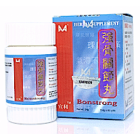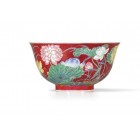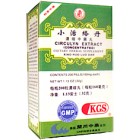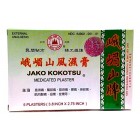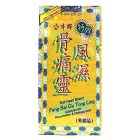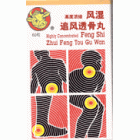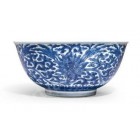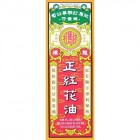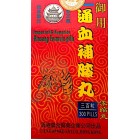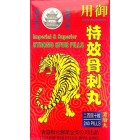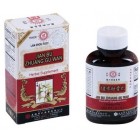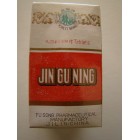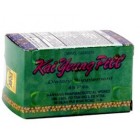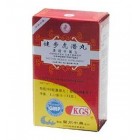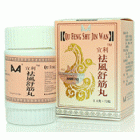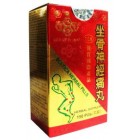Arthritis, Rheumatism, Sciatica, Muscle & Joint
Of the six excesses, wind is the primary exogenous pathogenic factor, since cold, damp, dryness, and heat may all depend on wind to attack the body.
Pathogenic wind manifested conditions include: diseases involving excess movement of the body: epilepsy (rare convulsions) and Parkinson’s disease; diseases involving symptoms appearing in different parts of the body at different times: early stage rheumatism involving differing joints or skin rashes that appear in different places; diseases involving loss of movement: stroke, paralysis, tetany, and coma; various pain, numbness, and spastic syndromes, sometimes referred to as bi syndromes, including headache, toothache, limb numbness, tendon spasms, arthritis, deep bone pain; diseases that are acute: common cold, influenza, sinus infection, skin eruption, sore throat, cough, eye disorders; and diseases that affect the surface of the body (skin or flesh, rather than viscera): chronic eczema, leprosy, scrofula, hair loss.
Internal wind, not necessarily aroused by exogenous wind, is described as being closely related to the liver and displays four causative factors: liver yang excess and yin deficiency generating endogenous wind (mainly the result of emotional frustration); extreme heat (usually in the advanced stage of febrile diseases); yin deficiency (usually due to prolonged illness that consumes body fluids); and blood deficiency (usually from insufficient blood production or from excess blood loss).
Bonstrong
Strengthen muscles, bones and tendons while improving circulation with a complex blend of radix salviae miltiorrhizae, dispaci, rehmanniae, epimedii, psoraleae in combination with other bolstering her..
$12.50
Chuan Bi Tang, Decoction of
Chianghuo & Turmeric Formula or Relieve Bi Syndrome Decoction for relief of painful arthralgia of upper limbs with wind-cold-damp obstruction, blood stagnation in the channels. Useful for arthriti..
$14.00
Circulyn Extract or Xiao Huo Luo Dan
Invigorates and clears the channels, activating qi and blood, benefiting kidney yang while dispersing cold. Relieves rheumatic pain, numbness or difficulty in moving joints, chronic lower back pain. ..
$6.00
Du Huo Ji Sheng Wan
Relieves stiffness or pain in the joints, lower back or knees. Pain may be due to injury or as result of arthritic, rheumatic or sciatic conditions. Dispels wind cold and damp while tonifying liver an..
$6.00
E Mei Shan or Jako Kokotsu
With wu zhu yu fruit extract! Use for fast deep penetrating relief of most muscular and joint aches and pains. Directions for Use: Apply to well cleaned afflicted area. Ingredients: Menthol, cam..
$3.50
Feng Sai Gou Tong Ling
Use for muscular and joint aches and pains related to arthralgia, rheumatism, gout, osteoporosis, with pain in shoulders and back. Symptoms include pronounced headache, soreness of loins, pa..
$28.00
Feng Shi Zhui Feng Tou Gu Wan
Clears wind damp and wind damp heat to invigorate blood circulation, kidney, liver, tendons and bones. Use for lumbago pain in the lower back, chronic sciatica, joint pain (of extremities, in fingers,..
$15.50
Five Photos Brand Tien Ta Wan
Dispels stagnant blood to alleviate bruising from trauma, injury. Formulated to promote circulation, reducing healing time. Benefits bones, joints, tendons, muscles, circulatory and nervous system. A ..
$21.00
Guan Jie Yan Wan, Decoction of
Treats rheumatoid arthritis, clearing wind-damp-heat in the channels, targeting inflammation in the joints. Applicable to hot, painful joints, arthritic pain, sciatic inflammation. Not for use while p..
$12.00
Imada Red Flower Oil or Hung Fa Yeow
Soothing Imada Red Flower Oil relieves the most aching pains from ligaments, muscles, and joints caused by injury or over use as well as softening sprains and stiffness following exercise or spor..
$12.00
Imperial & Superior Ginseng Formula Pill
Promotes blood circulation to relieve pain. Soothes loins, liver, spleen, relaxing tendons and improving weakened states. Use for rheumatic pains, cold and flu, for migraine, lumbago and weak lim..
$25.00
Imperial & Superior Rheuma-Aid Pills
Invigorates kidneys to activate channels, dispelling wind damp, particularly suited for symptoms associated with rheumatoid arthritis manifested as pain and aching in shoulders and upper joi..
$25.00
Imperial & Superior Strong Spur Pills
Removes stasis and improves circulation. Benefits symptoms associated with spur, arthralgia, osteoporosis, gout, rheumatism, headache, shoulder and back pain, sore loins, lumbar and ischiadic&nbs..
$25.00
Imperial and Superior Tong Bei Pills
Invigorates kidneys to activate channnels, dispelling wind and damp. Excellent for rheumatoid arthritis characterized by inflamed hands and knees. Ingredients: Red Ginseng, Herba dogoste..
$25.00
Jian Bu Zhuang Gu Wan
Relieves wind damp, eliminating blood stasis, tonifying qi. Relieves pain from arthritis and rheumatism, to strengthen bones and tendons. Beneficial also for pains and aches associated with sciatica, ..
$10.00
Jin Gu Ning
Use to relax muscles, improve circulation. Use for relief of aches and pains associated with arthritis, rheumatism, particularly pains in joints, legs, extremities, ankles and bones. Ingredients: C..
$12.00
Kai Yeung Pill
Dispels wind damp and toxins, tonifying and circulating blood and qi to sedate heat and relief skin's surface. Use for variety of skin irritation, specifically eczemas, dermatitis, fungal infections, ..
$12.00
Ossifex Extract or Jian Bu Hu Qian Wan
Use for kidney weakness aggravated by wind and damp causing problems in the lower back, legs, or gait. Useful for chronic arthritis, lumbago and sciatica. Apply for cases of gout, arthrodynia, myasthe..
$6.00
Qu Feng Shu Jin Wan
Reduces numbness caused by gout, osteoarthritis, rheumatoid arthritis. Reduces pain and rigidity. Energizes nervous system, dissolving cold, removing wind and damp. Ingredients: Radix Saphoshnikovi..
$15.00
Sci-tica Herbal Pills, Zuo Gu Shen Jing Tong Wan
Relieves sciatic pain affecting the lower extremities with numbness, tingling and pain shooting down the legs. May also benefit acute or chronic lower back pain, knee pain and rheumatoid arthritis aff..
$15.00

